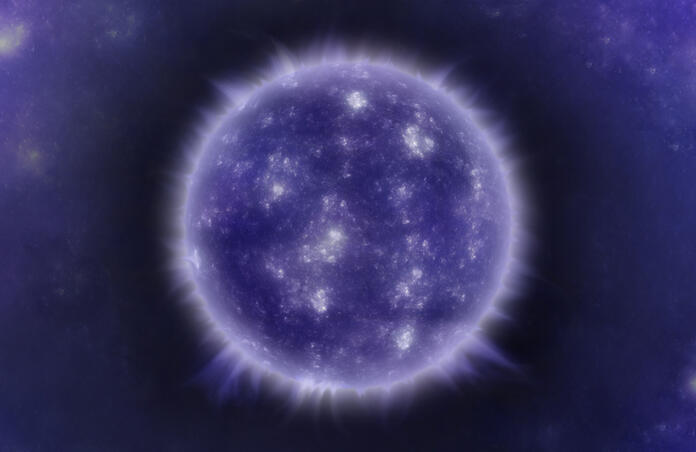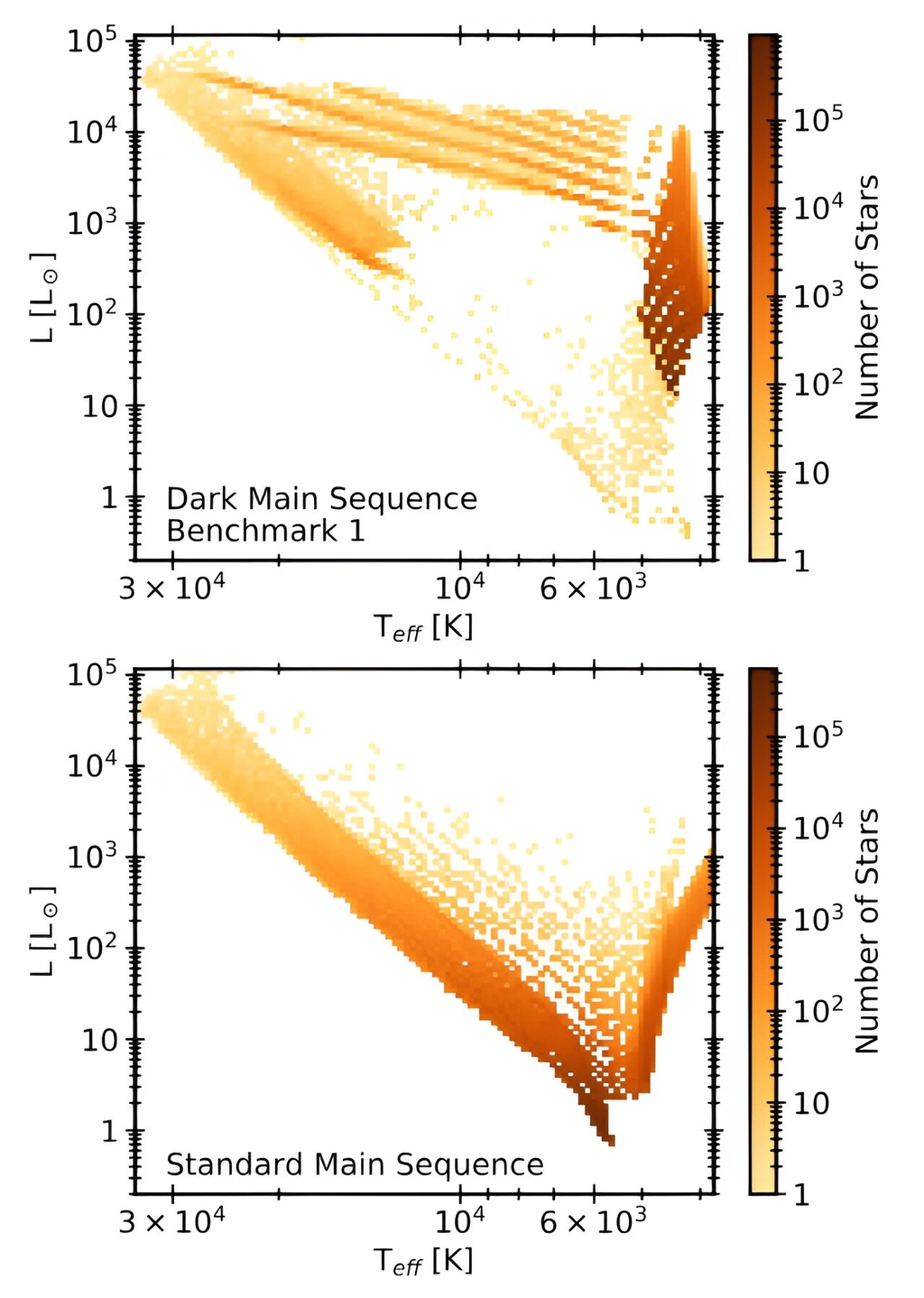Team discovers 'immortal' dark matter stars

A group of scientists at Stockholm and Stanford have discovered a potential class of dark matter stars – those that could exist within one light year of the milky way’s centre. The stars receive an outwards pressure from dark matter annihilation as well as nuclear fusion, keeping them forever young and essentially immortal.
It is difficult to observe the galactic centre of the milky way, since this region is so bright. Sagittarius A*, a supermassive black hole, sits at the centre with a mass 4x that of the sun. Stars nearby Sgr A* orbit around it at speeds of several thousands of km/s. These inner stars, denoted S-cluster stars are particularly confusing, possessing properties unlike any other stars in the milky way. The origin of such stars is unknown due to the extreme environments that surround them at around 3 light years from the centre, which are not ideal for star formation. The innermost stars appear to be much more youthful than expected if they had moved inwards from somewhere else. Additionally, there are many heavy stars in the neighbourhood.
Stars generate heat through nuclear fusion, whereby hydrogen is converted to helium. Thermal radiation from this reaction and thermodynamic convection of the stellar plasma exerts an outwards force on the star. This balances the inward force of self-gravity. Stars are commonly classified by the position on the HR diagram, which is a luminosity-temperature graph. Four main regions are apparent: main sequence, white dwarfs, red giants and red supergiants. Majority of stars are found on the main sequence, since this is the longest stage of a star’s lifetime. This is a diagonal that runs from the top left to bottom right of the HR diagram.
However, dark matter is also present in galaxies. Its existence has been inferred indirectly from the fact that there is insufficient ordinary matter to explain the high stellar rotational speeds around the galactic centre. The density of dark matter is highest near the centre, decreasing with distance further out. Therefore, the inclusion of dark matter is expected within stars near the centre. If this is the case, dark matter annihilation – the collision of dark matter particles and antiparticles which produce photons and electrons – would provide an additional outwards pressure from within the star, perhaps dominating over nuclear fusion.
The research team found that including dark matter power in the dynamics of stars located within one third of a light year of the centre solves many of the known inconsistencies. They used standard star formation parameters over the evolutionary course of the milky way and dark matter particles slightly more massive than the proton in order to include dark matter annihilation. The team assumed that stars migrate on the main sequence towards the galactic centre, using a stellar evolution computer model. Following this, they injected dark matter into the composition of a star and evolved the star until it reached the red giant branch or an age of 10Gyrs.

Stellar populations with and without the presence of dark matter were calculated. Including dark matter, it was found that more massive stars experience a lower dark matter density, with slower core hydrogen fusion and thus a slower evolution rate. However, stars in higher dark matter density regions changed significantly, maintaining equilibrium through dark matter burning with less or no fusion. This led to a new stellar population located above the main sequence on the HR diagram.
"Our simulations show that stars can survive on dark matter as a fuel alone," said lead co-author Isabelle John from Stockholm University, "and because there is an extremely large amount of dark matter near the Galactic Center, these stars become immortal, staying forever young, occupying a new, distinct, observable region of the HR diagram.”
The dark matter model may be able to explain more of the galaxies known mysteries. For lighter stars, we see in our simulations that they become very puffy and might even lose parts of their outer layers," said John. She noted that "something similar to this might be observed at the Galactic Center: the so-called G-objects, which might be star-like, but with a gas cloud around them."
Currently, there are only a small number of individual stars known to exist close to the galactic centre, since this area is so bright. However, upcoming telescopes will be able to see a much clearer view, allowing scientists to better understand this stellar population and thus verify the existence of the dark main sequence.
--
Cover image: Sci.News
Journal source: Isabelle John et al, Dark Branches of Immortal Stars at the Galactic Center, arXiv (2024). DOI: 10.48550/arxiv.2405.12267
